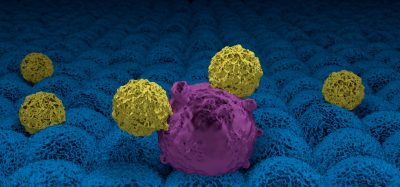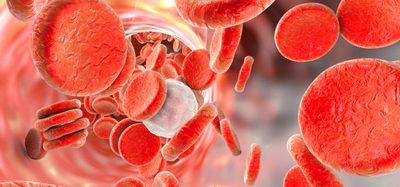Human tuberculosis blood signal replicated in mice
Posted: 24 March 2020 | Rachael Harper (Drug Target Review) | No comments yet
More research into tuberculosis is now possible with the development of an optimisied mouse model that exhibits the same blood immune response to Mycobacterium tuberculosis infection as humans.

A mouse model has been optimised which exhibits the same blood immune response to Mycobacterium tuberculosis infection as humans at the peak of disease, enabling further research.
Only 10 percent of people who catch tuberculosis (TB) become ill as the rest either fight off the disease or have ‘latent’ TB (LTBI), meaning that they have responded to the infection, but their immune system keeps the infection under control and they do not have symptoms.
Some people with latent TB can go on to develop ‘active’ TB. This group is known as ‘LTBI-progressors’. However, there is a lack of understanding around why their immune systems eventually fail to control the disease.
Now, researchers from the Francis Crick Institute, UK, have optimised a susceptible mouse TB model that has the same unique transcriptional blood gene signature, dominated by type I interferon-inducible genes, as is seen in the blood of people with active TB and people in the LTBI-progressor group. This signature shows which genes are either more or less active in the blood, representing the body’s response to the infection.
The similarities between the blood signature in this strain of mice infected with a clinical isolate of the pathogen Mycobacterium tuberculosis and that in the blood of people with active TB and people in the LTBI-progressor group, provide a valuable model for further research into TB, the researchers say.
“Researchers often use mice to study how diseases progress. To make sure their work supports future development of medicines, it’s important that the mouse model used for any disease mirrors how the disease behaves in humans. We’ve shown here that this susceptible mouse model for TB accurately reflects the disease in humans and we have all the tools that researchers need to use it now to test targets and mechanisms to uncover new therapies,” said Anne O’Garra, co-author and group leader of the Immunoregulation and Infection Laboratory at the Crick.
In the blood of the mice which are susceptible to tuberculosis, researchers detected an additional new finding that genes associated with a type of white blood cell, called granulocytes, were more active. They found that this is also the case in the blood of people with active TB, proving that the mouse model can help lead to new findings about the disease in humans.
Meanwhile, in the lungs of mice that are resistant, the researchers found that genes associated with other white blood cells – B cells making immunoglobulins (antibodies), T cells and natural killer cells – were more active. These cells could therefore be playing a role in helping to control the disease.
The study was published in Nature Immunology.
Related topics
Antibodies, Disease Research, Immunology, T cells
Related conditions
Tuberculosis (TB)
Related organisations
The Francis Crick Institute
Related people
Anne O’Garra







